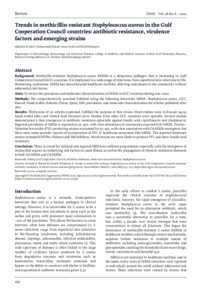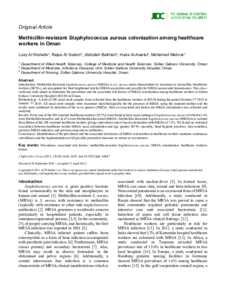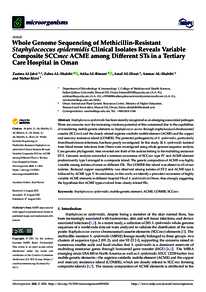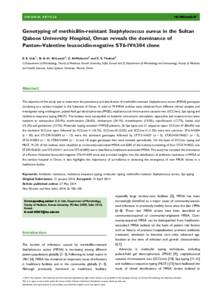Document
Trends in methicillin-resistant staphylococcus aureus in the Gulf cooperation council countries : antibiotic resistance, virulence factors and emerging strains.
Identifier
DOI: 10.26719/emhj.22.042
Source
Eastern Mediterranean Health Journal. v. 28, 6, p. 434-443
Contributors
Country
Switzerland
Publisher
World Health Organization.
Gregorian
2022-06-01
Language
English
English abstract
Background: Methicillin-resistant Staphylococcus aureus (MRSA) is a ubiquitous pathogen that is increasing in Gulf Cooperation Council (GCC) countries. It is implicated in a wide range of infections, from superficial skin infections to life-threatening syndromes. MRSA has moved beyond healthcare facilities, affecting individuals in the community without substantial risk factors. Aims: To review the prevalence and molecular characterization of MRSA in GCC countries during 2011–2021. Methods: We comprehensively searched PubMed using the following keywords: MRSA, Staphylococcus aureus, GCC, Kuwait, Saudi Arabia, Bahrain, Oman, Qatar, UAE, prevalence, and molecular characterization for articles published after 2011. Results: Thirty-nine of 111 articles examined, fulfilled the purpose of this review. Most studies were in Kuwait (44%), Saudi Arabia (28%) and United Arab Emirates (10%). Studies from other GCC countries were sporadic. Several studies demonstrated a clear emergence in antibiotic resistance especially against fusidic acid, ciprofloxacin and clindamycin. Regional prevalence of MRSA is reported as 25–35%, with clear dominance of community-acquired (CA)-MRSA. Panton– Valentine leucocidin (PVL)-producing strains accounted for 35–45%, with clear association with CA-MRSA emergence, but there were some sporadic reports of incorporation of PVL in healthcare-associated (HA)-MRSA. The reported dominant strains included EUST80, USA1100 and WA-MRSA-51. Novel strains are more likely to produce PVL and show fusidic acid resistance. Conclusion: There is a need for national and regional MRSA surveillance programmes, especially with the emergence of strains that require no underlying risk factors to cause illness, as well as the propagation of chimeric resistance elements in both HA-MRSA and CA-MRSA.
ISSN
1020-3397
Category
Journal articles





